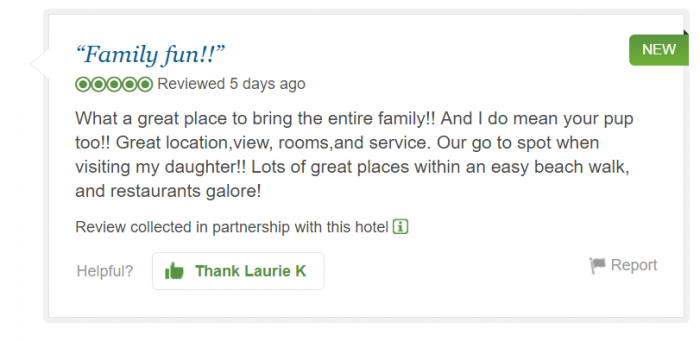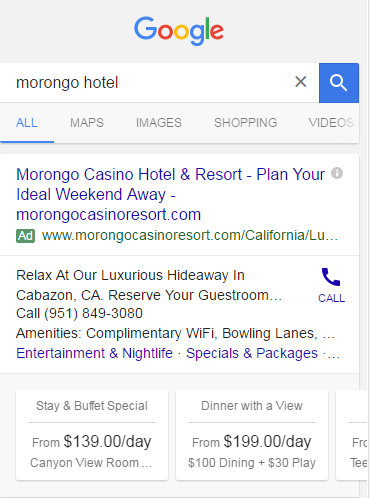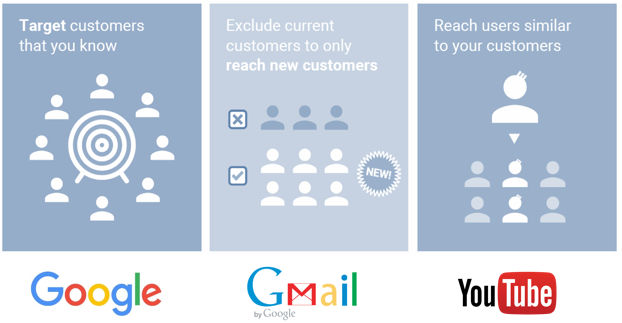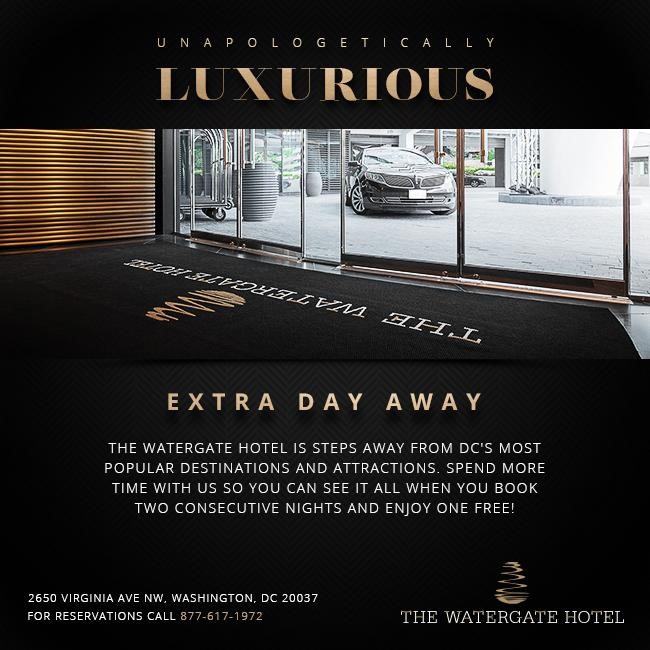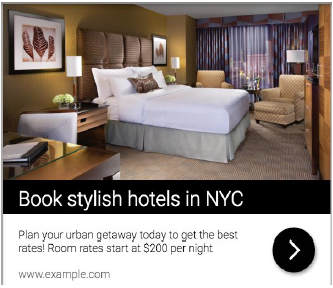By Mariana Safer and Carmine Fischetti
More than 25% of direct online revenue for hotels comes directly through Search Engine Marketing (SEM) initiatives, making these paid placements in the search engines an especially critical piece of a property’s digital marketing budget. With 61% of leisure travelers saying they use a search engine for planning travel online (Google), and hotel SEM campaigns typically reaching people closer to the “I want to book it” phase of their travel planning journey, allocating the right amount of budget and resources to SEM is important for getting in front of the right travel consumers, at the moment they are ready to book.
As we continue to see an acceleration of travel and hotel queries on Google (20% YoY in July 2016), there’s never been a better time to jumpstart your hotel’s direct bookings through SEM. Here are our recommendations on how to get started.
1. Take advantage of the newest ad formats available to ensure your strongest marketing messages are presented to travel consumers.
With the character limitations of traditional SEM ads, it can be challenging to craft marketing messages that communicate a hotel’s value proposition while also prompting a sense of urgency. To help marketers overcome this, Google has introduced a new version or Ad copy format. This new form of expanded text ads displays two headlines that are both 5 characters longer than traditional headlines. This format allows hoteliers to not only promote their brand name, but also include a focused call to action. The level of potential engagement also increases, especially because of the larger, single-description field. These additional 10 characters provide more real estate to describe the property without having to be hyperaware of sentence breaks.
According to Google, Expanded Text Ads drastically outperformed the standard ads’ CTR by 47%. This type of engagement boost with no additional investment needed will soon become the norm as the industry migrates towards longer-form copy. If you haven’t started yet, begin transitioning copy now to prepare for a total transformation in 2017.
2. Understand the big picture by tracking behavior across devices AND channels.
Mobile activity has been on the rise, and more than half (52%) of total travel bookings in the U.S. involve either mobile or multiple devices (Google). Providing an optimized mobile booking experience is key in securing critical revenue, and properly tracking results can help alleviate unwarranted decisions to pause ads or lower budget spend that might be driving a significant share of revenue through the voice channel.
Regardless of the user experience on mobile, some travelers prefer to make the actual booking over the phone. Part of this is due to lack of easy mobile payment options, and slower adoption of mobile ecommerce by some demographics (ex. baby boomers). In a recent case study conducted with the reservations sales experts at NAVIS, we were able to demonstrate the ‘big picture’ and show that an additional 32% of booking revenues from SEM campaigns actually came from the voice channel.
There are many tools in our search arsenal to help drive call-in activity, but the ability to track the outcome of this activity is paramount. Having full tracking coverage for all your efforts can make a true difference in allocating the appropriate amount of funds to your SEM campaigns.
3. Deliver a consistent message along the travel consumer’s planning and purchasing journey.
According to Google, every travel booking is influenced by over 19 digital touchpoints, up from 9.2 touchpoints in 2015. This means that travel consumers may come in contact with your hotel brand’s website and marketing messages multiple times throughout their travel planning journey.
It is important to ensure that at each time your brand is exposed to the user that they are met with the same consistent message. Your website, SEM ads and digital marketing messages across campaigns should be personalized to the user as much as possible and also align with one another. Having a singular brand voice keep your message focused while reaching a wide audience.
SEM Ad promoting the ‘Extra Day Away’ message:
Banner ad with aligned marketing messaging:
4. Listen to your guests to align your marketing messages with the travel consumer’s perception of your property.
Search can be one of the most eye-opening information sources for a hotel. Listening to what terms your customers use to look for a property like yours can speak volumes as to how you are failing or succeeding in promoting your brand. You should optimize and evolve your search program based on the volume of traffic coming into your website and the performance of certain search queries. Changes, upgrades and overall improvements should be continuous for your account, and should be shaped and influenced entirely by what your potential guests and current guests are saying.
You may want to be viewed as a ‘chic’ hotel, but if a more common way to describe your property (in reviews for instance) is ‘family-friendly’, don’t fight against their perception of your property. You may want to distance yourself from the negative connotation of “cheap”, but if that is what users are searching you may just be distancing yourself from revenue. Search can be extremely profitable as long as you are staying true to your brand in the eyes of travel consumers.
5. With stiff competition from the Online Travel Agencies, budget appropriately and prioritize direct bookings.
Competition is pretty fierce in the hospitality space, and with supply predicted to exceed demand next year, increasing direct bookings and lowering distribution costs will be the key to saving your property’s bottom line in 2017.
The OTAs, especially after Google phased out text ads from the right side of its desktop search results, have invested millions of dollars in their own SEM campaigns. The result is increased cost per clicks and lower profits. A recent report by Oppenheimer Equity Research, based on data from Kenshoo, demonstrated that year-over-year the removal of Google's right rail of AdWords listings did impact performance for many advertisers.
The decreased number of listings boosted CTR (+38% YoY), and more than made up for the decrease in impressions (-19% YoY), driving clicks +11% Y/Y. However, due to the drastic decrease in AdWords "real estate" of over 66%, CPC’s skyrocketed which means that for the same amount of SEM budget, many advertisers are seeing less clicks due to the higher cost per click and faster budget depletions. The only beneficiaries are the OTAs who are bidding aggressively and have huge SEM budgets at their disposal.
Hotels need to budget appropriately for SEM, strictly monitor rate parity, and strongly communicate the value of booking direct across the property website and throughout all digital marketing initiatives.
6. Use the tools available to communicate your value proposition and stand out from the crowd.
Travel consumers in general are very price-conscious, and coupled with a competitive landscape in the hospitality industry there is often a sense of urgency among hoteliers to lower rate in order to secure a booking. With this mindset, it can be easy to lose sight of the true value your property offers which leads to failure in communicating its value proposition. If you have unmatched, top-tier suites or if the experience you provide is extraordinary, why keep that information hidden and only promote the lowest-quality inventory? Price extensions in ads help communicate a variety of different price points and value-adds, and speak to your different audiences in the same ad.
Price extensions give hotel marketers the ability to promote and highlight several, if not all, different room types. This is a great way to differentiate a property’s room types and drive higher revenue with no additional investment needed.
7. Capitalize on opportunities to talk to existing guests AND new potential guests.
Reaching users though paid search is a highly qualified form of advertising. If set up properly, a hotel’s SEM ads can engage a property’s most loyal audiences and engage new ones by balancing past-guest data with Intent data or in other words, through Smart Data Marketing.
By starting with the information, you already have about their guests, hotel marketers can take their guest profiles and purchase history (CRM data), or even just data on their website visitors, and combine this data with Google’s targeting capabilities. This includes reaching targeted users on the Search Network, Gmail Ads, and YouTube Trueview. Adwords’ Customer Match lets hotel marketers show ads based on data about guests they share with Google – truly allowing them to reach the right person, on the right device, at the right time to secure the booking.
Hoteliers should relay specific messages for returning visitors as opposed to new unique users by using remarketing lists (according to Google, after visiting your website, returning visitors are 58% more likely to click on your ad). With a similar user’s audience being built based on key traits of their frequent site visitors, marketers can then filter users who are still in the early stages of a sale, but are more likely to convert due to the traits they share with ideal customers. This audience overlay adds an extra layer of qualification and ensures impressions and clicks, which in turn provides a more promising opportunity for conversion.
When bidding on non-branded terms, hoteliers are reaching out to users who are interested although most likely farther up the sales funnel and not likely to convert yet. The cost and competition of these terms tend to be high and the return is generally a bit low. One must maintain a delicate balance by driving more branded material volume to put users into the search funnel, while also maintaining spending to reach more qualified users. Many hoteliers rely on their branded terms to drive revenue, and often underestimate the power of non-branded keyword terms due to the lack of a solid attribution model to show how those terms eventually led to a booking.
Utilizing these advanced targeting methods, coupled with a strategy targeting in-market audiences (people that are actively considering a hotel in your destination), will be essential to remaining competitive and seeing high returns in 2017.
8. Think Inside the InBox with Gmail Ads
Email targeting is a great way to take advantage of Google’s targeting options and to attract new potential guests. From targeting users on the Google Display Network (GDN) who are signed into their Gmail accounts to targeting users on Gmail based on their email content, Google uses valuable data to identify your key target audiences. This different, yet complimentary way of thinking provides a new outlet to increase volume.
Email targeting provides the opportunity to capitalize on an existing email database by following up with each user as they navigate through the GDN, which will increase the chances of an eventual conversion. Additionally, the inverse works as well. Hotel marketers can target users through their interests and activities across the GDN as well as their email content, and send engaging visual ads directly to their Gmail inbox.
Gmail Ad for The Watergate Hotel, targeting people traveling to Washington D.C.
9. A picture is worth 1,000 words
In the ever-advancing digital age, we are seeing a progression towards more engaging and elaborate ad formats. This is no different within the SEM space. In a channel that has historically been centered around brief text-based ads on a results page, we are beginning to see a rise in SEM ads with accompanying images. Google has already started integrating this change by including images in all text-based Display ads. Now, text ads on the GDN will pull from a supply of images to display when your ad appears. Despite still being in its early stages, we are already seeing positive results with increased CTR and higher potential for initiated bookings.
Google is not the only search engine on the imagery kick. Bing has also taken great strides towards accompanying visuals with their new image extensions. This new tool allows advertisers to increase clicks and grab attention by adding up to 6 images to appear alongside ad copy and any other extension. Incorporating these types of extensions can attract 94 percent more views than a piece of content with text only. The addition of images can really make the difference in performance.
10. Keep your strategy fluid and prepare for the unknown
Lastly, but certainly not least – it’s important to keep your strategy dynamic and be able to quickly adapt to the changing digital marketing landscape. Paid Search is a constantly evolving channel. As customer interests and views change, so do search queries and available advertising tools and methods. This should be accounted for in planning your budget. Having dollars set aside to execute new ideas or pursue new potential guests can give you the breathing room needed to maintain a strong flow of bookings while still optimizing and growing direct website bookings.





